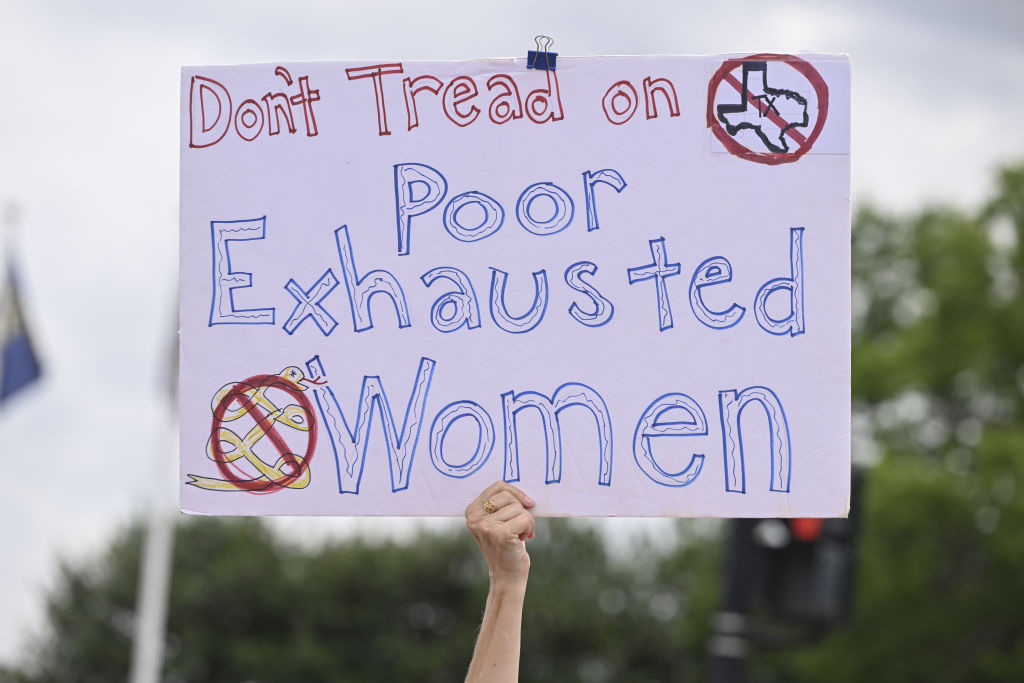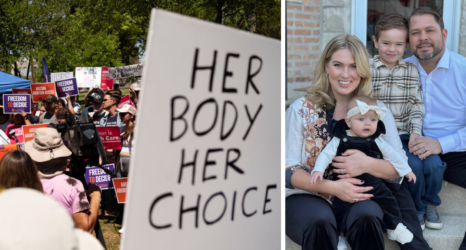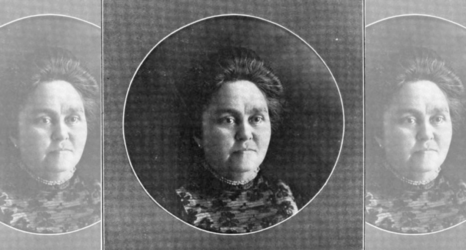Both suits are being represented by the extremist Christian organization Alliance Defending Freedom and are part of a concerted effort to undermine abortion access.

This commentary was originally published by The Century Foundation.
When the U.S. Supreme Court eliminated the federal right to abortion through its decision in Dobbs v. Jackson in June 2022, it claimed to be returning the issue of abortion access back to the states and people’s elected officials. In the majority opinion, Justice Alito wrote “the authority to regulate abortion is returned to the people and their elected representatives.” Justice Kavanaugh, in his concurring opinion, wrote that the Constitution neither legalizes nor outlaws abortion but “leaves the issue for the people and their elected representatives to resolve through the democratic process in the States or Congress.”
The conservative justices’ claims of neutrality have quickly been proven to be a pretense, however: Rather than being done with the issue of abortion, the Supreme Court has taken up two cases this term that could have further disastrous effects on abortion access.
One case could lead to limits on access to one of the two drugs used for medication abortion, and the other could allow states to ban emergency abortion care to save a patient’s life. Decisions in both cases would have effects nationwide—illustrating the chaos and confusion that the Dobbs decision has created for providers and patients.
These cases come at a time when the highest Court’s approval rating is at a near-record low—and while an increasingly large majority supports access to abortion.
Access to Mifepristone for Medication Abortion
The Supreme Court has agreed to hear the case Alliance for Hippocratic Medicine (AHM) v. the Food and Drug Administration (FDA), which could lead to limits in access to mifepristone, one of the two drugs used in the most common regimen of medication abortion care.
Medication abortion care, which was growing in popularity even before Dobbs and makes up the majority of abortions in the United States, has become only more vital since then. Recent data from the #WeCount study by the Society of Family Planning show that medication abortion via telehealth is on the rise, including dispensation of abortion pills to states with bans (from states with shield laws in place to protect providers). But telehealth provision of mifepristone is one of the forms of access at stake in AHM v FDA.
The case, being heard on March 26, comes to the Supreme Court after the Fifth Circuit partially upheld a ruling that would reinstate burdensome (and medically unnecessary) restrictions that make access to the medication more difficult. Access to mifepristone has not yet changed, fortunately, because the order was stayed until the Supreme Court weighs in.
The case was initially filed in a lower court in Texas specifically so that, upon appeal, it would eventually reach Judge Matthew J. Kacsmaryk, a noted extremist who is hostile to abortion and family planning access.
I’ve written before about the dangers of this practice of “forum shopping” that has allowed anti-abortion plaintiffs to choose a sympathetic judge, as well as the case’s reliance on false claims misrepresenting mifepristone’s safety (in reality, the medication has fewer adverse effects than Tylenol or Viagra). In fact, one of the studies put forth by plaintiffs and cited by Kacsmaryk in his decision was recently retracted by the journal in which it was originally published—due to major flaws in study design, methodology, analysis, and more that invalidate its results.
But the lack of evidence brought by the plaintiffs brings little reassurance that their arguments will be dismissed by a Supreme Court that so recently overturned Roe, going against decades of precedent and the backing of the mainstream medical and scientific community.
Abortion Care in Emergency Situations
In Idaho v. United States, the Supreme Court could deliver another dangerous blow to pregnant people, allowing states to deny them the right to lifesaving emergency care.
The case concerns the Emergency Medical Treatment and Labor Act (EMTALA), a federal law that requires hospitals with emergency departments (as a condition of receiving Medicare funding) to provide a medical screening examination, and then provide stabilizing care to those with emergency conditions—and transfer, if needed—to any individual presenting for care, regardless of ability to pay.
Shortly after the Dobbs decision, the U.S. Department of Health and Human Services (HHS) released guidance clarifying that if a patient’s necessary stabilizing treatment is abortion care, then it must be provided—preempting any state laws that ban abortion.
After the HHS guidance was released, the U.S. Department of Justice (DOJ) filed a complaint against the state of Idaho arguing that the state’s near-total abortion ban—which was passed in 2020 and set to go into effect in August 2022, after Dobbs—was in direct conflict with EMTALA. The Idaho ban has incredibly narrow exceptions for care, meaning that providers who adhere to the standards set by EMTALA (for patients requiring abortion as stabilizing care) would face the threat of civil or criminal action.
The District Court of Idaho sided with the DOJ and enjoined the law in August 2022, but the plaintiffs—both the state of Idaho and the Idaho legislature, whose challenge has been consolidated into the state’s case—appealed to the Ninth Circuit and asked the U.S. Supreme Court for an emergency review.
In January, not only did the Supreme Court agree to take up this case, but they also, inexplicably, allowed the Idaho ban to take effect in the meantime—immediately putting pregnant patients in the state at risk.
Extremist Agendas and Movement Judges
Although the two cases take two different approaches, their arrival at the U.S. Supreme Court is part of a concerted effort to undermine abortion access in the United States. Parties to both suits are being represented by the extremist Christian organization Alliance Defending Freedom (ADF). As I’ve noted before, ADF has taken on a number of high-profile cases for the far right, particularly for the anti-abortion and anti-LGBTQ rights agendas. The ADF has been designated a hate group by the Southern Poverty Law Center and is incredibly well-funded by right-wing donors, with the full extent of their funding origins obscured by their dark money backing.
The extremist agenda being pursued in the nation’s court system is only able to gain traction because of the presence of what Professors Robert L. Tsai and Mary Ziegler have called “movement judges.” These judges, who are willing to do away with precedent for the sake of enacting a movement’s goals—such as the overturning of Roe—bring with them the threat of “judge-driven oligarchy.”
Recent revelations concerning the wildly lavish gifts and trips that Justices Clarence Thomas and Samuel Alito received from conservative elites and Republican megadonors have raised particular concern over movement influence on the Supreme Court.
Federal judges, including Supreme Court justice Amy Coney Barrett, also have ties to the ADF specifically, and its mission to impose extreme Christian values on the American people. And, as illustrated by the recent Alabama state Supreme Court decision on in-vitro fertilization, efforts to weaponize Christianity against reproductive rights and justice are not limited to abortion care: In the Alabama judge’s ruling, the word “God” appeared 41 times.
These cases, notably, come at a time when the highest Court’s approval rating is at a near-record low—and while an increasingly large majority supports access to abortion. Amidst a growing reckoning with the danger of ideologically motivated jurists, the Supreme Court is poised to degrade abortion access even further, despite the flimsy cases presented in AHM v. FDA and Idaho v. United States.
The science and the law are clear in each of these cases.
- When it comes to access to mifepristone, the FDA reviewed the evidence base built by researchers over decades—demonstrating the overwhelming safety and efficacy of the medication.
- In the case of EMTALA, federal statute plainly requires that physicians must be able to assess patients and provide appropriate medical care in emergency situations, including abortion care.
Yet during the remainder of this Supreme Court term, the justices that overturned Roe v. Wade have the potential to again issue harmful rulings on abortion access—overriding the expertise of scientists and healthcare providers.
Up next:
U.S. democracy is at a dangerous inflection point—from the demise of abortion rights, to a lack of pay equity and parental leave, to skyrocketing maternal mortality, and attacks on trans health. Left unchecked, these crises will lead to wider gaps in political participation and representation. For 50 years, Ms. has been forging feminist journalism—reporting, rebelling and truth-telling from the front-lines, championing the Equal Rights Amendment, and centering the stories of those most impacted. With all that’s at stake for equality, we are redoubling our commitment for the next 50 years. In turn, we need your help, Support Ms. today with a donation—any amount that is meaningful to you. For as little as $5 each month, you’ll receive the print magazine along with our e-newsletters, action alerts, and invitations to Ms. Studios events and podcasts. We are grateful for your loyalty and ferocity.





